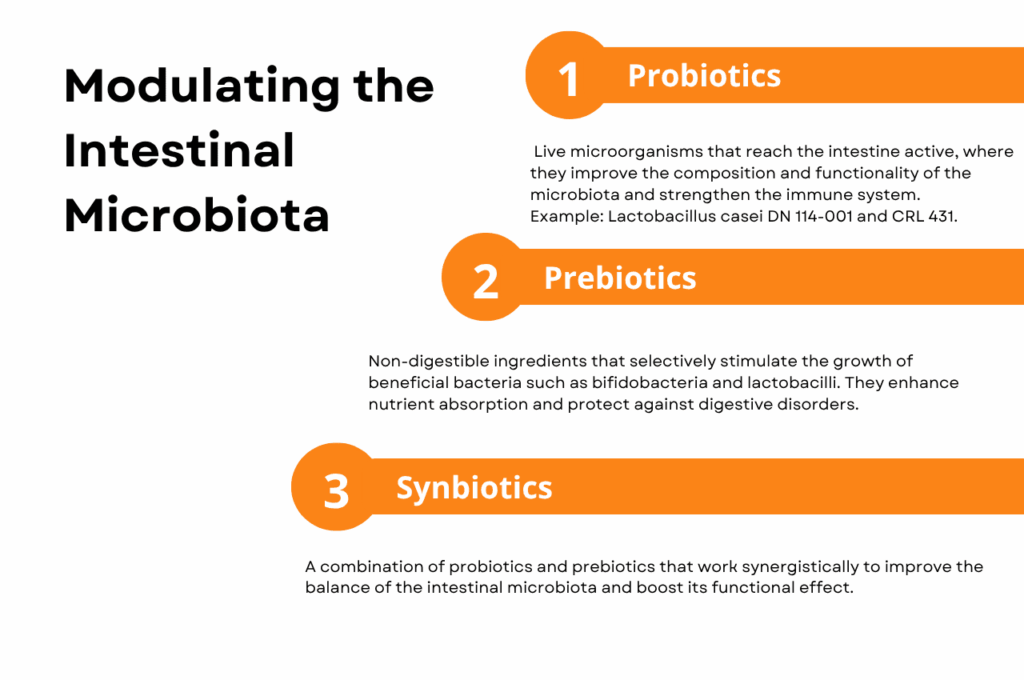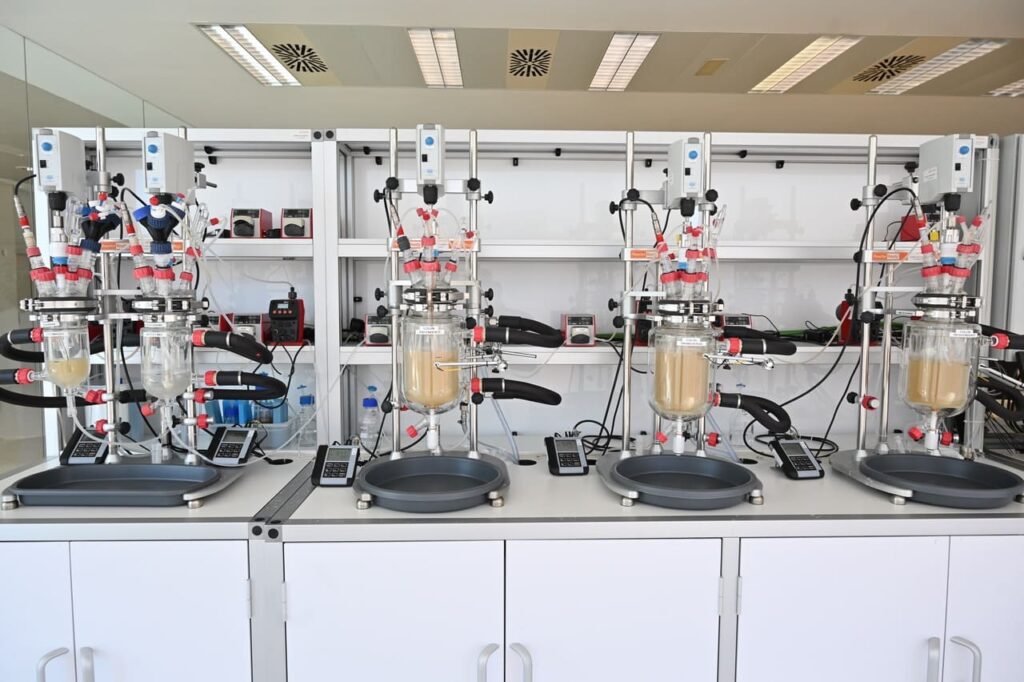The sharp rise in obesity rates over the past few decades has led researchers to explore explanations beyond diet and physical inactivity. Among the most significant emerging factors is the intestinal microbiota, the diverse community of microorganisms that inhabit the digestive tract and actively participate in metabolic, immune, and digestive functions. Its composition, diversity, and functionality are directly linked to the risk of developing obesity and related metabolic disorders.
Intestinal Microbiota: A Key Player in Digestion, Gut Microbiota Weight Loss, and Immune Function
The intestinal microbiota not only plays a central role in nutrient digestion and absorption but also carries out key metabolic functions such as:
- Synthesising essential vitamins (e.g., B vitamins and vitamin K)
- Extracting energy from indigestible dietary compounds like fibre
- Regulating the immune system
Additionally, intestinal microbiota helps protect the host against pathogens through competitive exclusion and the production of antimicrobial compounds, while also supporting the integrity of the intestinal barrier.
In individuals with obesity, reduced microbial diversity and changes in the relative abundance of dominant bacterial phyla—particularly an increased Firmicutes/Bacteroidetes ratio—have been observed. These alterations can enhance the efficiency of energy extraction from food and promote a state of low-grade chronic inflammation, both of which contribute to weight gain and metabolic imbalances.
Moreover, microbial metabolites such as short-chain fatty acids (SCFAs)—acetate, propionate, and butyrate—act as key metabolic modulators. These compounds influence lipid and carbohydrate metabolism, appetite regulation via hormones like GLP-1 and PYY, gut motility, and immune responses, reinforcing the microbiota’s central role in maintaining physiological homeostasis.
Modulating the Intestinal Microbiota Through Functional Ingredients
The intestinal microbiota is highly sensitive to dietary components. As a result, one of the most promising approaches to preventing and managing obesity involves modulating microbiota using functional ingredients, such as probiotics, prebiotics, and fermentable fibres. To ensure the efficacy of these solutions, it is essential to understand how functional ingredients interact with the digestive system—and with the microbiota in particular.
This strategy supports emerging evidence linking gut microbiota weight loss mechanisms to the intake of targeted ingredients that promote a more favourable microbial composition. By shifting the microbial balance, it’s possible to enhance satiety, reduce low-grade inflammation, and support metabolic efficiency—key factors in long-term weight management.
Probiotics: Microorganisms That Support Intestinal Balance
Probiotics are live microorganisms which, when administered in adequate amounts, provide health benefits to the host. Various probiotic strains have demonstrated their ability to modify the composition and activity of the intestinal microbiota, survive passage through the gastrointestinal tract, and act directly on the intestinal epithelium and immune system. For instance, strains such as Lactobacillus casei DN 114-001 and CRL 431 have shown positive effects in microbial modulation and enhancement of both intestinal and systemic immunity.
Prebiotics: Functional Nutrients for Beneficial Bacteria
Prebiotics are non-digestible ingredients — such as specific oligosaccharides — that selectively stimulate the growth of beneficial bacteria like bifidobacteria and lactobacilli in the colon. Their effects include improved mineral and vitamin absorption, strengthening of the intestinal barrier, and reduced risk of digestive and inflammatory disorders. Commonly studied prebiotic compounds include inulin and fructooligosaccharides (FOS).
Synbiotics and Fermented Foods: Synergy for Intestinal Health
The combination of probiotics and prebiotics, known as synbiotics, together with other bioactive compounds derived from fermented foods, is fuelling the development of functional foods aimed at restoring the balance of the intestinal ecosystem and supporting metabolic health.
These products can be easily integrated into daily diets without requiring changes in eating habits and can deliver measurable physiological effects, particularly relevant in cases such as obesity, chronic inflammation, or metabolic syndrome.
Technologies for Studying the Effectiveness of Functional Ingredients
For these products to be truly effective, it is essential to understand how they interact with the digestive system and, specifically, with the intestinal microbiota. In this context, in vitro digestive simulation models are key tools. These systems accurately replicate the conditions of the human digestive tract, including the colonic fermentation phase, enabling:
- Assessment of the bioaccessibility of functional ingredients
- Study of microbial modulation induced by different compounds
- Analysis of key metabolite production, such as SCFAs
- Prediction of the potential effectiveness of functional foods and supplements
Incorporating such tools in the R&D phase of new foods, supplements, or nutraceuticals not only ensures scientific rigour but also facilitates the design of more effective, safe and consumer-oriented products. At AINIA, we develop and apply advanced in vitro technologies to scientifically evaluate the impact of ingredients and products on digestive and metabolic health, accelerating their validation and market entry.
Evaluating the Impact on the Intestinal Microbiota Using In Vitro Digestive Models
To verify whether a functional ingredient can truly modulate the intestinal microbiota favourably, it is essential to have access to in vitro digestive simulation models that accurately reproduce the physiological conditions of the human gastrointestinal tract.
These systems enable the study of interactions between the ingredient and colonic microbiota under controlled conditions, simulating key aspects of the digestive process.
What Do In Vitro Digestive Models Offer?
- Reliable simulation of real digestive conditions, including pH, transit time, enzyme activity and bile salts at each stage (oral, gastric, intestinal and colonic)
- Evaluation of colonic fermentation and microbial composition and activity changes in response to an ingredient or food matrix
- Quantification of bioactive metabolites such as short-chain fatty acids (SCFAs), which play roles in metabolism, immunity and gut signalling
- Reproducible, ethical, and cost-effective results that help predict real physiological effects without the need for early-stage in vivo studies
In some cases, in vitro models of gastrointestinal digestion and colonic fermentation incorporate cellular models representing the gastrointestinal barrier, allowing evaluation of key parameters such as intestinal permeability and immune response. Advanced technologies such as intestinal organoids and organ-on-chip devices recreate the architecture and function of the intestinal epithelium, enabling a more physiologically relevant analysis of microbial interactions and ingredient effects on the mucosal barrier. These approaches offer reproducible, ethical and cost-effective results and reduce the need for initial in vivo experimentation.
Additionally, the use of such models aligns with the 3Rs principles in animal experimentation:
- Replacement: substituting animal use with in vitro or ex vivo systems when scientifically viable
- Reduction: allowing better selection of conditions and compounds that justify subsequent studies in animal or human models
- Refinement: improving experimental conditions to minimise animal stress and impact when their use is necessary
Modulating the intestinal microbiota through functional ingredients offers a promising strategy for preventing or treating metabolic disorders. However, it requires robust scientific evidence. In this regard, in vitro digestive simulation models provide a controlled framework to evaluate the behaviour of an ingredient along the gastrointestinal tract, its impact on the intestinal microbiota and its ability to generate beneficial effects, making them key tools in modern gut microbiota weight loss strategies.






